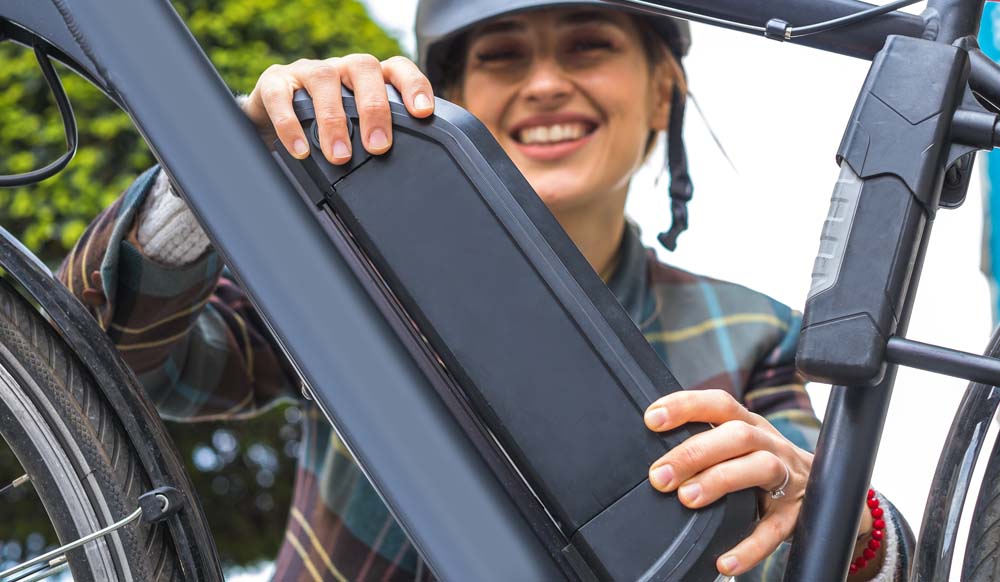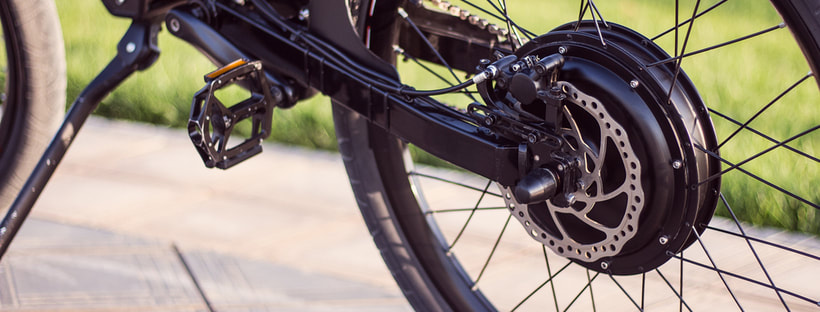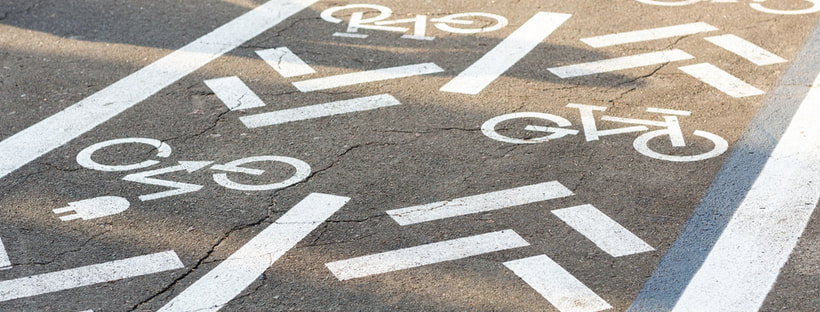 If you’re shopping for your first ebike, you’ve probably discovered that prices vary a lot. There are many different styles of bikes where a boost can be applied, such as hybrid, road, mountain, cruiser, tricycle, recumbent, fat tire, folding, cargo, and the style you choose will have an impact on price. But even within a given style, there is a wide difference in prices. If you have a fixed budget, it is what it is, but if you have some flexibility in how much you are able to spend, how much you should invest and what are you giving up by going with a cheaper ebike? Ebike price categories Ebikes on the market today have technology that has been around roughly since 2005. Advances are being made all the time with more powerful motors, batteries, technology, and features that allow you to roll with a lighter and stronger bike and go greater distances. Just like there are differences between a Chevrolet and Lamborghini automobile, even though they each will get you to where you want to go, the manufacturing tolerances, cost of materials, set of features, and maintainability will differ at various price points. We can roughly categorize ebikes today as being in one of three price categories:
What separates an electric bike from an acoustic model (traditional bike) are three things: 1) the battery, 2) the motor, and 3) the display. Below we will talk about considerations on these three items, plus the other factors that influence the price of an ebike. Battery The battery on an ebike is one of the two most important components. The battery is the most expensive part and without a reliable one, your ebike will not have the ability to provide an assist that you would experience with a class 1 or 3 ebike, or operate with a throttle available with a class 2 ebike. The capacity and the manufacturer that produces the battery will influence the cost considerably. The low-end models usually come with generic batteries that can be purchased for a relatively low price. Even if a high-end model utilizes a battery that has the same capacity as a generic one, a brand name can easily increase the cost because it represents the research, engineering, and warranty the tops brands provide. If a company such as Bosch, Brose, Shimano, Yamaha, and Bafang made it, you should expect to pay more. Voltage When buying a battery for your e-bike, you should consider the maximum speed it will assist you with, which is determined by the voltage. Voltage refers to the pressure at which electricity moves through the battery, which translates to the speed level of the bike. It will, therefore, influence whether your ebike is fast or slow. You typically don’t need more than a 36v battery if you only need to drive your bike to work or for short rides around the city. A 48v battery is better suited for rough terrains such as you’d encounter mountain biking, when you need to go on long rides or if you want one of the heavier styles of ebikes, such as a fat tire or cargo bike. The higher the voltage the more expensive the battery so only consider a higher voltage battery if you are going to use it at its maximum capacity. Capacity The capacity of the battery is measured in watt/amp hours with 10Ah being the most common measure suitable for short rides on flat, smooth surfaces. Rough terrains and regular long distance journeys at a high speed will require higher capacities up to 20Ah+. But more capacity translates to more battery weight. Even though it helps you ride longer, you’ll need to consider the weight of your bike, your own weight, and that of the battery itself. So, if you buy a heavy battery, it might overwhelm your bike and reduce the speed. Capacity is also highly dependent on the assist level you use. If you ride utilizing only a little assist the battery will last longer than if you are riding in turbo mode or use a throttle your entire ride. Another factor in battery cost is amp-hours which is the charge capacity of the battery. If you go on regular long distance rides, you want a battery that can supply a steady current. In this case look for a battery that supplies a lot of current for one single amp so you can enjoy a longer time on one single charge. Just keep in mind that the more amp hours a battery has, the more costly it is. Some ebikes have the capability to carry two batteries. This doubles the capacity but also the cost and weight. Mounting Where a battery is mounted on an ebike also impacts the cost. The popular options are rack-mounted or frame-mounted. The frame-mounted batteries bolt onto the frame where the water bottle holder is located on the bike or on some models, is integrated into the frame so that you hardly even know there is a battery in there. This option is more expensive since it requires a specially made frame. The rack-mounted batteries are typically installed at the back of the bike on a rear bike rack and allows you to use a standard bike frame. Motor The second most important component for an ebike is the motor. The power and performance capabilities of an ebike’s motor play a key role in determining the overall cost of the bike—in general, the better the motor the more expensive the bike. The two primary types of motor are hub drive and mid drive and the hub drive will be less expensive but the brand will greatly impact the price and quality. While both styles of motors have advantages and disadvantages the factor that impacts the price the most is the amount of power. Most standard electric bike motors come with a power rating of 250 watts and typically go up from there to as high as 750 watts. Higher rated motors generate more power than those with lower ratings, and as a result provide a more responsive, more versatile motorized riding experience. How much power you need will depend on the type of riding you're planning to do and the terrain on which you will be riding. Steep hills and rough terrain rides will benefit from a more powerful motor. The second factor you should consider in a motor is torque. A rear hub and a mid-drive motor can both be rated for 750 watts but have very different abilities to get you up a steep hill because a mid-drive motor will have a mechanical advantage and typically generate higher torque than a hub motor. Display
The display or control unit is also an important part of any ebike and will influence the cost. Components that influence the cost of a display are the LCD display, circuit breakers, and wires, also known as harnesses. Cheaper wires that are usually made from aluminum-copper with more expensive ones made from copper. Displays usually mirror the price category of an ebike--a low cost ebike will have a low cost, basic display, a mid-range model a few additional features, and a high end model display will utilize higher end components and have additional features and capabilities. If there is a smartphone app available in conjunction, or instead of, an ebike display the cost will be associated with the display. Frame A bicycle frame can be made from a variety of materials such as steel, aluminum, titanium or carbon fiber and the frame material will impact the weight, riding characteristics, and the cost. Lighter materials are manufactured from metal alloy or carbon fiber but these are generally more expensive materials. Because of the additional weight, speed and torque of an ebike, components are usually designed to be beefier than those of a traditional bike so it makes sense to try to make up for this additional weight, plus the weight of the battery, motor, and display with a lightweight frame. Another feature of the mid-priced ebikes and above are shock absorbers on the front fork. These increase the comfort during a ride to reduce the jarring a rider will experience on uneven pavement but these add to the cost. Brakes Although the ebike brakes are less expensive then all the parts we mentioned so far, they are no less important and will impact the price. Just like the frame, you should pay attention to the material of the brakes and how they are manufactured. Cheaper options will be made from plastics or stamped metal and thin rotors and pads will not likely last long. Hydraulic disc or rim brakes are popular on mid-range and above ebikes to assure you have the stopping power when you need it. You will end of spending more money replacing brakes when they fail than if you specified a components designed for ebikes in the first place. Support At some point your ebike is going to require maintenance. While regular bike maintenance such as a flat tire or squeaky brakes are something that applies to all bikes and, if you are handy, be performed yourself or serviced at a local bike shop, components unique to an ebike, the battery, motor, and display will require a unique skill set and diagnostic tools. You need to have a plan for how you will troubleshoot, get parts, and resolve issues when they occur. If you buy an ebike from a local bike shop, make sure they will service it. Bikes available over the internet may seem like a good bargain, but not so much if they stop operating and you cannot get maintenance or parts. Also consider the warranty offered with the bike which typically ranges from 1 to 5 years. If an ebike component fails during the warranty period it will save you a lot of money to have the manufacturer replace the part. Conclusion With an ebike the old adage that "you get what you pay for" is true. If you go with a low cost model, either because that is all your budget will allow or you are only an occasional rider, just be aware that there are risks when it comes to maintainability, supportability, and features. Ebike innovations are happening at a rapid pace, but at some point you need to just jump in and experience the power of an ebike. Comments are closed.
|
Earth Rider Blog about CycingAuthorSharon Kaminecki and others comment on adventures in bicycling and other stories Categories
All
Archives
August 2023
|






